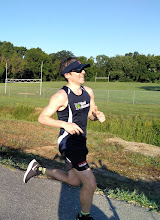


In the morning we toured Berlin on a bus. I was most fascinated with the history of East and West Berlin and how the two played a large role in the Cold War. Our first stop took us to a section of the Berlin Wall that is still standing, but covered by art. I remember the significance of the wall as I was in middle school when it fell, watching scenes on TV and discussing them in social studies. I snapped a few pictures of the wall and of some of the art. The one of the two guys kissing is called “The Fraternal Kiss” and is one of the more famous paintings on the East Side Gallery which depicts former Soviet leader, Brezhnev, locking lips with the former head of East Germany, Honecker. I also liked the caricature of Checkpoint Charlie, which we saw right before lunch. I almost got my passport stamped, but that cost about $4, and I tried to haggle unsuccessfully so I walked.



After lunch, we went on a walking tour with the founder of the program, Dr. Dagmir Pruin. She is not Jewish, but is a professor of the Hebrew Bible and very learned in these matters. The tour, “Don’t Trust the Green Grass,” – or in this case, white snow – was meant to get us to see the things that weren’t there: the former thriving Jewish community. At its height, Berlin had 170,000 Jews. 55,000 were murdered in the Shoah. That number is relatively low, but bear in mind that some were able to flee before and some did survive. Those that stayed behind did so because they believed that as bad as things were, they couldn’t get worse.
We started the tour at the site of the former oldest synagogue in Berlin. It is now a small park surrounded by apartment buildings. On the site is a memorial sculpture telling the story of the non-Jewish wives married to Jewish men. The men were taken away and the wives protested, and apparently, the men were returned. As we walked in the dreary cold, we stepped passed plaques indicating where Jews had once lived. One that stuck out was of Uri Aron, who was born in 1942 and murdered in 1943. After, we went to a Jewish cemetery where Moses Mendelssohn is buried. He was a German Jewish philosopher to whose ideas were the basis for the renaissance of European Jews, Haskalah (the Jewish Enlightenment). He has been referred to as the father of Reform Judaism.
Next to the cemetery is a former Jewish old age home – ironic. There is now a Jewish high school; its population is 400, half of which are Jewish.
Back at the hotel, Frank Reichherzer, who is studying for his advanced degree at Humboldt University, gave us a brief history of Germany. I was most interested in the Weimar Republic, having written a paper on it for political science class at GWU. Article 48, the Enabling Act, allowed the Nazis to rise to power. What I did not know that was valuable to learn was just how it was that it came about that Germany reunified.
At night, we went to the New Synagogue to dine with Berlin Jews. Many of those are not German, having come from Russia, but it was an educational experience. Food was scarce by the time we arrived, but I managed a donut which is appropriate for Hanukkah. After, we went to Christmas markets and walked around the mall, splitting in small groups to hit the city. We wandered a market and then walked down Prenzlauer Allee to the Brandenberg Gate. Along the way, we drank some of the “hot wine” and stopped at a store where I bought a shirt of the “walking man” on the traffic lights. Not quite sure how to explain that inside joke. Along our walk, we stopped and looked down at the site of where the Nazis burned books. The memorial is a glass window that peers down into empty bookcases – very powerful image. At Brandenberg Gate, a snowball fight broke out, which was fun. Eventually I negotiated a peace, and we made our way to a bar near the hotel to finish the night.

No comments:
Post a Comment